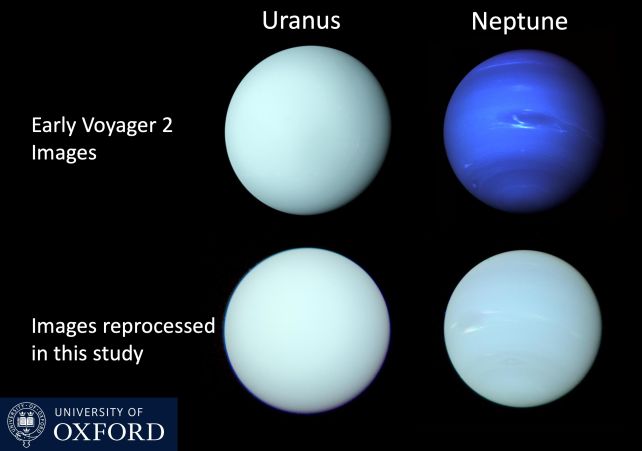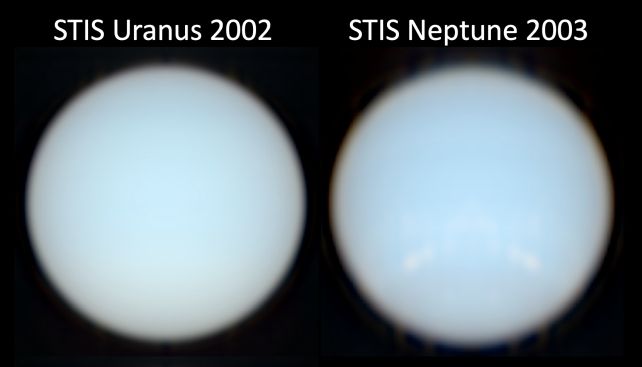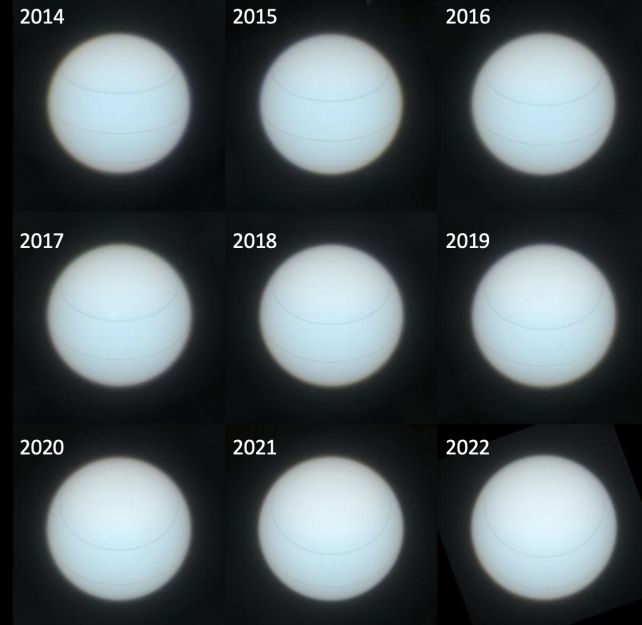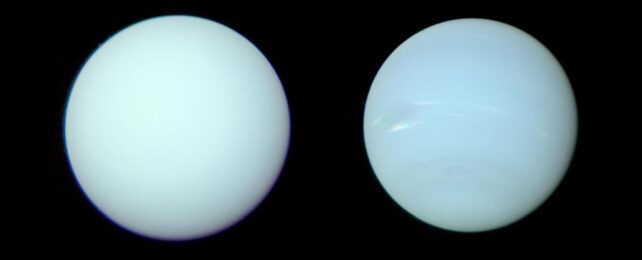A fresh analysis of some old images has revealed that we've been wrong about Neptune this whole time.
For decades, since Voyager 2 flew past Neptune and Uranus taking up-close portraits on the way, scientists have wondered why the two planets – extremely similar in most ways – were such noticeably different colors.
Uranus, the Voyager 2 pictures suggested, appeared the pretty aqua shade of a duck's egg. Neptune, on the other hand, seemed to be the darker hue of lapis lazuli.
Given that the atmospheric compositions of the two planets are almost identical, the difference was startling. And puzzling.
Now, however, scientists have reprocessed the data and revealed that we had it deeply incorrect, all along. Uranus and Neptune actually very close in color. There's a difference, but it's much smaller than previously thought.
The reason for the misconception is that Voyager 2 recorded its images of the planets in two separate color bands – and the images of Neptune were processed in such a way to emphasize contrast, and deepen its true color, making it appear more blue than it is in reality.

"Although the familiar Voyager 2 images of Uranus were published in a form closer to 'true' color, those of Neptune were, in fact, stretched and enhanced, and therefore made artificially too blue," explains planetary physicist Patrick Irwin of the University of Oxford.
"Even though the artificially-saturated color was known at the time amongst planetary scientists – and the images were released with captions explaining it – that distinction had become lost over time. Applying our model to the original data, we have been able to reconstitute the most accurate representation yet of the color of both Neptune and Uranus."
Scientists have known for a long time that the Voyager 2 images didn't reflect the colors of Uranus and Neptune entirely accurately, but it was unclear what the colors actually were.
Irwin and his team harnessed two powerful instruments to find out, Hubble's Space Telescope Imaging Spectrograph (STIS) and the Very Large Telescope's Multi Unit Spectroscopic Explorer.

They used the data from each telescope to independently determine the true color of both Neptune and Uranus, and then used that information to reprocess, not just the Voyager 2 images but images obtained using Hubble's Wide Field Camera 3, which also have been previously processed to return a darker-hued Neptune.
The newly reprocessed images show that Neptune is much lighter than we thought; its color is closer to that of Uranus. The main difference is that Neptune is slightly bluer, which is probably the result of a thinner layer of atmospheric haze.
The new observations also solved another mystery – that of why Uranus changes color slightly over the course of its year, which lasts 84 Earth years. At solstice, when one of the poles faces the Sun, the planet appears slightly greener. At equinox, when the equator faces the Sun, Uranus is slightly bluer.

This has to do with Uranus' unusual orientation. It's tipped sideways so that its rotational axis is perpendicular to the orbital plane of the Solar System. The planet's poles are much less abundant in methane than the equator, which changes the way Uranus reflects sunlight there, since methane absorbs red wavelengths.
Additional modeling revealed a haze of methane ice that thickens as the planet moves from equinox to solstice, increasing the reflectivity. This is what gives the planet its fascinating changing hue, like a strange mood ring.
"The misperception of Neptune's color, as well as the unusual color changes of Uranus, have bedeviled us for decades," says astronomer Heidi Hammel, of the Association of Universities for Research in Astronomy, who did not participate in the research.
"This comprehensive study should finally put both issues to rest."
The team's findings have been published in the Monthly Notices of the Royal Astronomical Society.
